You can extend your battery life by up to several hours daily through strategic backlight customization. Start by adjusting your keyboard backlight timeout to 10 seconds or less, then configure motion-activated display duration to minimize unnecessary activations. Set your Always-On Display to minimum brightness and create scheduled dimming for sleep hours. Optimize gesture-based screen wake sensitivity by disabling “lift to wake” features, enable ambient light sensors for automatic adjustments, and establish activity-based backlight profiles that’ll reveal even greater power savings.
Adjust Backlight Timeout Settings for Minimal Power Drain
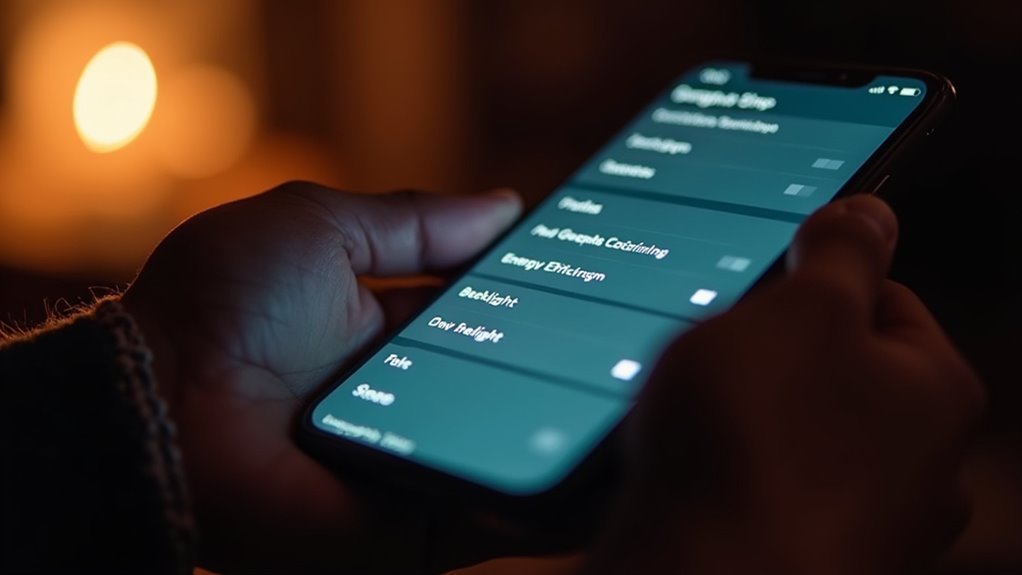
While keyboard backlights enhance visibility in low-light conditions, they’ll continuously drain your battery if you don’t configure proper timeout settings. You can greatly extend battery life by adjusting when your backlight automatically turns off.
Keyboard backlights continuously drain battery power without proper timeout settings, but strategic adjustments can significantly extend your device’s battery life.
If you’re using an HP laptop, you’ll find built-in options to customize backlight timeout directly through device settings. However, Windows doesn’t provide universal backlight timeout controls for all manufacturers. You might need to check your device’s specific software or BIOS settings for power management options.
For unsupported devices, you’ll need manual interventions like PowerShell commands or registry edits. Some manufacturers offer dedicated apps for backlight customization. Many users report that the default 10-second timeout can be frustratingly short for regular typing tasks.
Monitor your power consumption after adjustments to identify ideal timeout periods that balance visibility needs with battery efficiency.
Configure Motion-Activated Display Duration Controls
Beyond managing keyboard backlights, you can achieve significant battery savings by configuring how long your display stays active after motion detection triggers it.
You’ll want to shorten the activated duration—this prevents your screen from staying on unnecessarily long after you’ve checked your phone. Adjust your motion sensor sensitivity settings to reduce frequent activations that drain battery through repeated display wake-ups.
Consider disabling “Lift to check phone” and “Reach to check phone” features if you don’t use them regularly. Set appropriate activation thresholds that balance convenience with power conservation.
Combine these adjustments with shorter screen timeout settings and auto-brightness to maximize efficiency. Motion effects consume additional battery power, so reducing these animations can help preserve energy even further. Remember, your overall usage patterns affect battery life more than motion settings alone, so optimize holistically.
Customize Always-On Display Brightness Levels
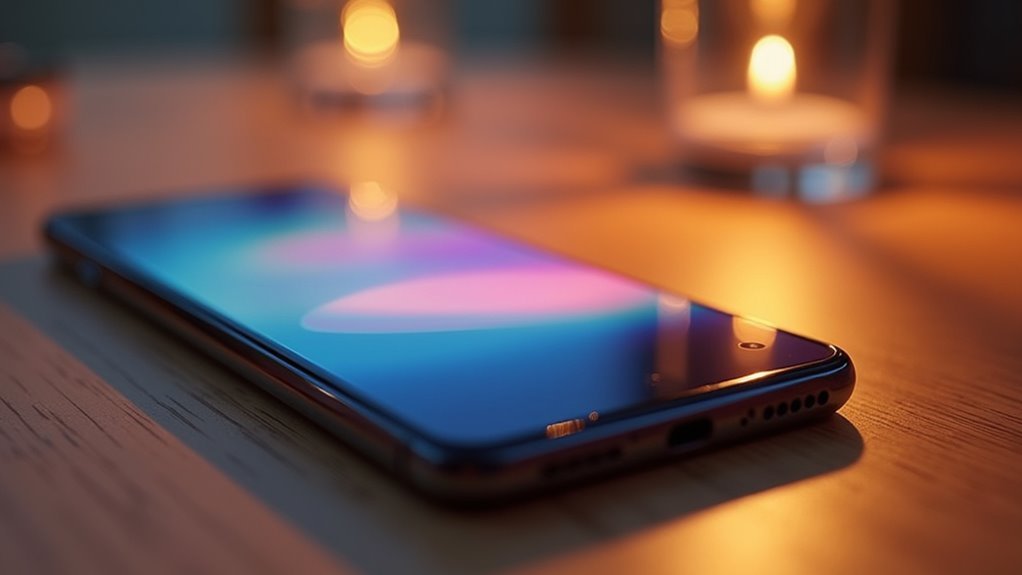
You can greatly extend your battery life by fine-tuning your Always-On Display brightness instead of accepting default settings.
Start by setting your AOD to its minimum brightness level through the Lock Screen and Security menu, then disable auto-brightness to maintain consistent power consumption.
Consider enabling scheduled dimming options that automatically reduce brightness during nighttime hours or configure adaptive AOD controls that respond intelligently to your surrounding environment. You can also optimize power usage by adjusting your AOD visibility to tap to show mode, which only activates the display when you specifically interact with your device.
Minimum Brightness Settings
When your phone’s Always-On Display burns through battery faster than you’d like, adjusting the minimum brightness settings can greatly reduce power consumption.
However, you’ll face limitations since manual brightness adjustments don’t always affect AOD settings, which rely on automatic environmental adjustments.
For Samsung devices, you’ll need apps like Goodlock to access AOD brightness controls due to software restrictions. Recent software updates have removed built-in AOD brightness options, forcing users to rely on third-party solutions.
Android devices generally lack direct manual AOD brightness options, depending instead on auto-adjustment features.
Some phones offer “Extra Dim” accessibility modes, though these might still be too bright for low-light conditions.
Your display’s hardware capabilities determine how low brightness can go.
In dark environments, lowering AOD brightness considerably extends battery life while maintaining functionality.
Third-party customization tools provide additional control when manufacturer settings fall short.
Scheduled Dimming Options
How can scheduled dimming transform your battery management strategy? You’ll discover it’s one of the most effective ways to optimize your device’s power consumption automatically.
Set time-based adjustments that reduce brightness during specific hours when you don’t need maximum visibility. You can customize schedules for your Always-On Display brightness, creating different settings for work hours versus nighttime. Since AOD brightness is linked to overall screen brightness settings, adjusting your main display brightness will also affect your Always-On Display levels.
Event triggers like sunset or sunrise provide natural dimming shifts that align with your daily routine.
Third-party apps such as Goodlock expand your scheduling options beyond default settings, offering granular control over brightness changes.
Integrate these features with your existing device settings for seamless operation. You’ll notice significant battery life improvements without sacrificing functionality when you automate these adjustments properly.
Adaptive AOD Control
Since adaptive AOD control learns from your usage patterns, it becomes increasingly intelligent at managing your Always-On Display brightness without constant manual intervention. Navigate to Lock Screen and Security settings to enable this feature, which balances visibility with battery conservation by adjusting brightness based on ambient light and your preferences.
| Brightness Level | Battery Impact | Best Use Case |
|---|---|---|
| Very Dim | Minimal drain | Dark environments |
| Medium | Moderate consumption | Indoor lighting |
| Bright | Higher usage | Outdoor daylight |
| Adaptive | Optimized balance | All conditions |
Unlike basic auto-brightness that only considers ambient light, adaptive control integrates your manual adjustments over time. This creates personalized brightness profiles that maintain visibility while extending battery life. You’ll notice improved power efficiency as the algorithm refines its understanding of your preferences.
Modern systems utilize ambient light sensors to provide precise lux readings that enhance the accuracy of adaptive brightness algorithms. The calibration process ensures that brightness adjustments respond appropriately to environmental lighting changes, making your device more efficient at conserving battery power while maintaining optimal screen visibility.
Set Up Scheduled Backlight Dimming During Sleep Hours
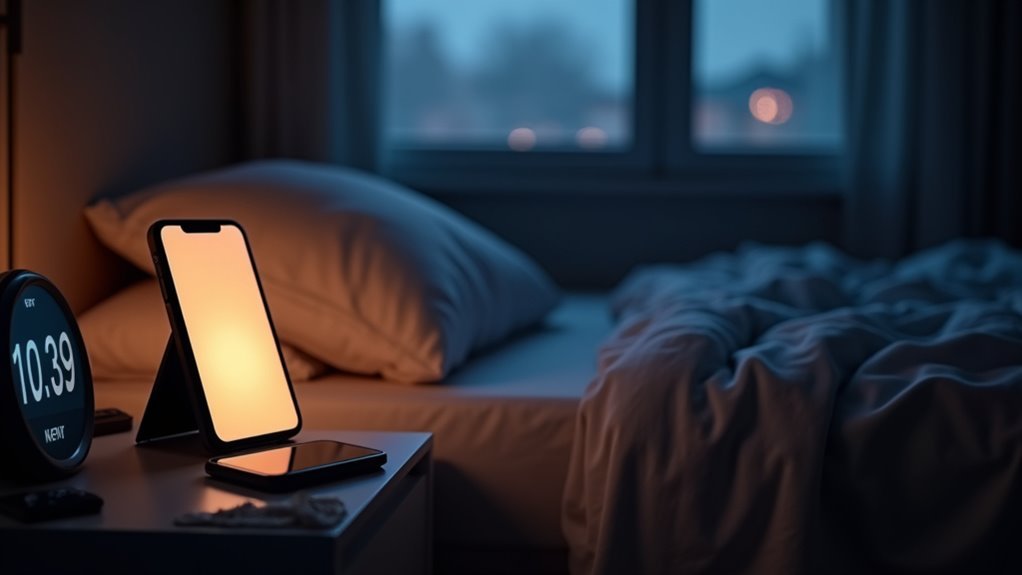
You can greatly extend your battery life by setting up automatic backlight dimming that activates during your sleep hours.
Configure your device to automatically reduce screen brightness at bedtime and return to normal levels when you wake up.
Fine-tune the dimming levels to balance visibility with maximum power savings throughout the night. Additionally, enabling dark mode during these hours can further reduce power consumption while creating a less jarring experience if you need to check your phone at night.
Automatic Schedule Configuration
When your device automatically dims its backlight during sleep hours, you’ll dramatically extend battery life while creating a less disruptive nighttime environment. Setting up automatic schedules guarantees your device adapts to your routine without manual intervention.
Navigate to your device’s system settings to configure custom dimming schedules. Most smartphones and smartwatches offer intuitive interfaces where you’ll input specific sleep times. Garmin users access System > Sleep Mode, while Apple devices integrate Dark Mode scheduling with sleep settings. Configure the timeout duration for screen activation to further enhance battery conservation during sleep mode.
| Device Type | Access Path | Key Features |
|---|---|---|
| Garmin Watch | System > Sleep Mode | Custom backlight, watch face options |
| Apple iPhone | Settings > Display | Night Shift, Dark Mode scheduling |
| Android Phone | Settings > Display | Adaptive brightness, scheduled dimming |
| Smartwatch | Display Settings | Ambient light sensors, auto-adjustment |
| Smart Home | App Integration | Cross-device lighting control |
You’ll notice immediate battery improvements once automatic dimming activates nightly.
Sleep Hour Optimization
While automatic scheduling provides a solid foundation, optimizing your device’s sleep hour settings takes battery conservation to the next level.
You’ll dramatically reduce power consumption by scheduling backlight dimming during your sleep hours, extending battery life while protecting your eyes from harsh nighttime glare.
On Android devices, you can configure these settings through Digital Wellbeing’s Bedtime mode, which offers customizable screen dimming options.
iOS users should enable Night Shift, which automatically adjusts brightness and color temperature during scheduled sleep periods. You can also schedule dark mode activation to complement the dimming effect.
These scheduled adjustments create consistent brightness levels throughout your sleep cycle, minimizing manual intervention while supporting better sleep quality and maximizing your device’s energy efficiency. For even more comprehensive battery optimization, disable adaptive brightness during these scheduled periods to maintain consistent dimming without automatic adjustments that could interfere with your sleep schedule.
Dimming Level Settings
Setting the right dimming levels transforms your device’s nighttime energy efficiency while maintaining usability when you need it most.
Configure your brightness to 25% or less during sleep hours for ideal battery conservation. Most devices offer customizable dimming settings through system controls or battery saver modes that automatically reduce brightness at preset times.
You’ll need to manually enable and configure these schedules in your device’s settings, as they’re not activated by default. The scheduling options vary between Windows, Android, and iOS platforms, but all provide automated dimming capabilities.
Beyond energy savings, lower brightness levels reduce eye strain in dark environments and support healthier sleep patterns by minimizing blue light exposure. Normal indoor lighting of 100 lux or more can suppress melatonin production, making automated dimming even more beneficial for maintaining healthy circadian rhythms.
Remember that dimmed screens still consume power unlike display sleep mode, but considerably less than full brightness.
Optimize Gesture-Based Screen Wake Sensitivity
Since gesture-based screen wake features can greatly impact your device’s battery life, adjusting their sensitivity levels becomes essential for ideal power management.
Navigate to “Motions and gestures” or “Display” in your device settings to customize responsiveness of touch gestures for screen wake. You’ll find options to adjust swipe, tap, and motion-based triggers.
Consider disabling “lift to wake” and “double tap to wake” features, as they often trigger unnecessary screen activations in your pocket or bag.
Lower sensitivity prevents your screen from waking with minor movements, reducing accidental activations that drain battery. While higher sensitivity improves activation ease, it increases false positives.
Find the right balance between user convenience and battery savings by fine-tuning these settings to minimize unintended screen-on events. On Samsung devices, access the navigation bar settings through the display menu to locate gesture sensitivity adjustments.
Enable Ambient Light Sensor for Automatic Brightness Control
Your device’s ambient light sensor automatically adjusts screen brightness based on environmental lighting conditions, making it one of the most effective battery optimization features available. This sensor detects light levels from under 50 lux in dark rooms to over 10,000 lux in bright sunlight, adjusting your display accordingly.
| Environment | Light Level (lux) | Battery Savings |
|---|---|---|
| Dark room | <50 | Up to 40% |
| Office lighting | 200-500 | 15-25% |
| Overcast outdoors | 1,000-2,000 | 10-15% |
| Sunny day | 5,000-10,000 | 5-10% |
| Direct sunlight | >10,000 | Minimal |
Enable this feature in your display settings. Choose adaptive brightness over basic auto-brightness—it learns your preferences while maintaining energy efficiency. You’ll reduce eye strain and extend battery life considerably. Proper brightness control also reduces internal heat, which helps prevent component aging and extends your device’s overall lifespan.
Configure Activity-Based Backlight Duration Profiles
Activity-based backlight duration profiles represent the next evolution in intelligent battery management, automatically adjusting your screen’s timeout settings based on what you’re actually doing with your device.
You can configure different profiles for specific activities like reading, gaming, or browsing, with each profile enhancing backlight duration and intensity accordingly. For reading, you’ll want longer timeout periods to prevent interruptions, while idle browsing can use shorter durations.
Your device’s accelerometers and gyroscopes track activity patterns, enabling automated profile switching. You can also create custom profiles that schedule backlight adjustments based on your typical usage times. Modern smartphones leverage Qualcomm technology to analyze content types and automatically optimize brightness levels for maximum battery efficiency.
These sensor-driven adjustments guarantee peak battery conservation without compromising your experience across different activities.
Frequently Asked Questions
Does Using Dark Mode Actually Save More Battery Than Backlight Adjustments?
No, backlight adjustments save more battery than dark mode alone. You’ll get universal energy savings by lowering brightness across all screen types, while dark mode only helps on OLED displays.
Which Smartphone Brands Have the Most Effective Adaptive Brightness Sensors?
You’ll find Samsung and Google Pixel phones have the most effective adaptive brightness sensors, using AI-driven algorithms that learn your preferences. OnePlus also delivers excellent performance with advanced ambient light detection technology.
Can Third-Party Apps Override System Backlight Settings and Drain Battery Faster?
Yes, you’ll find third-party apps can override your system’s backlight settings through APIs and drivers. They often bypass energy-efficient defaults, causing increased power consumption and faster battery drain than standard settings.
How Much Battery Percentage Can Optimal Backlight Customization Save Daily?
You can save 10-15% daily battery through ideal backlight customization. Dark mode on OLED displays saves up to 63%, reducing brightness saves 5-10%, and proper screen timeout settings greatly extend your device’s battery life.
Do OLED Screens Benefit More From Backlight Tricks Than LCD Displays?
You’ll see OLED screens benefit greatly more from backlight tricks than LCD displays. OLED pixels turn completely off for dark content, while LCD backlights stay on regardless, limiting energy savings potential.
In Summary
You’ve now got seven powerful backlight tricks that’ll dramatically extend your battery life. By fine-tuning timeout settings, motion controls, and brightness levels, you’re taking control of your device’s biggest energy drain. Set up those scheduled dimming profiles and activity-based controls to work automatically. Don’t forget to enable that ambient light sensor – it’ll adapt perfectly to your environment while keeping your battery running longer.

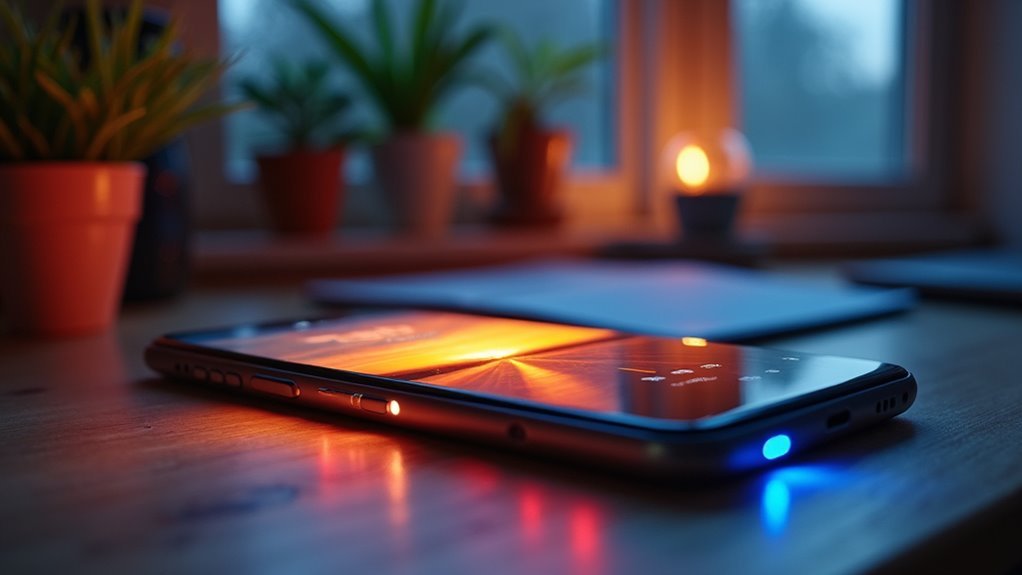

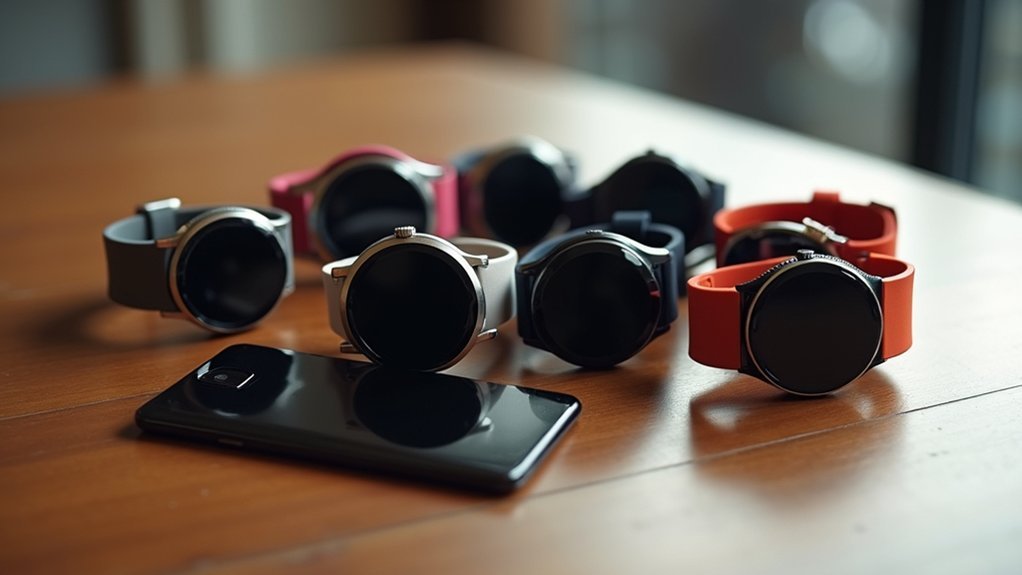
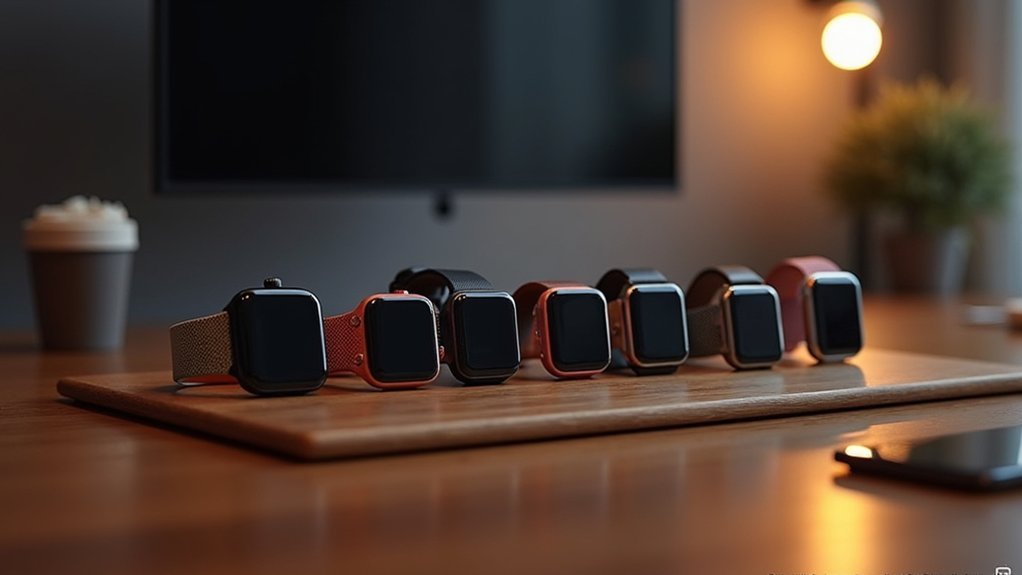
Leave a Reply